|
|
|
|
|
Galleria Tassonomica
di
Natura Mediterraneo
|
|
|
| Autore |
 Discussione Discussione  |
|
|
Havinthus
Utente Junior
 
Città: Leiden

25 Messaggi
Tutti i Forum |
 Inserito il - 17 marzo 2011 : 20:33:24 Inserito il - 17 marzo 2011 : 20:33:24


|
Buonasera a tutti,
Scusa ancora, ma non parlo Italiano.
I would like to show you a picture of an assassin bug (Heteroptera, Reduviidae, Harpactorinae) that I took several years ago near Ingham (North Queensland, Australia).
This bug had two characteristics that are not present in mediterranean species as far as I know.
First, the very hairy legs of this bug were shiny and sticky because they were covered with (or soaked in) tree resin. This had been deliberately done by the bug as the stickiness of the resin enables it to grab and hold preys more easily. Also, the resin itself attracts prey. Within a few meters distance of the bug, which was sitting on a tree leaf, many small native bees were present which were attracted to a tree with a resin leaking wound.
A second remarkable feature of this bug were the white areas on his body which are a kind of wax secreted by the bug itself. Rearing offspring of this bug showed me that this wax is present in all larval (nymphal) stages except the first one. The function of this wax is unknown, it has been found in several other extramediterranean harpactorine species in subtropical and tropical parts of the world.
Immagine:
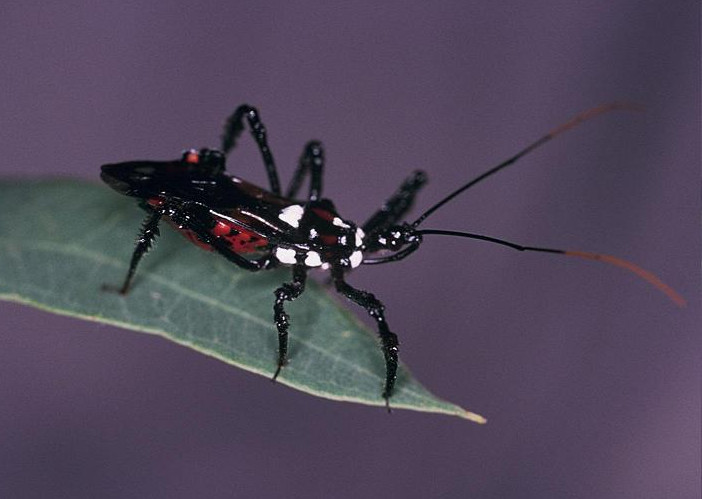
63,47 KB
The bug in this picture belongs to a scientifically undescribed species of the endemic Australian genus Poecilosphodrus (identification confirmed by dr. Malipatil of Australia).
(At present Poecilosphodrus is a monospecific genus containing only P. gratiosus. Mentionings on the internet of other species alleged to belong to this genus are erroneous)
Cordiali saluti,
Frank
|
|
|
macromicro
Utente Super
    

Città: Piovene Rocchette
Prov.: Vicenza
Regione: Veneto

7113 Messaggi
Macrofotografia |
 Inserito il - 20 marzo 2011 : 16:28:38 Inserito il - 20 marzo 2011 : 16:28:38


|
benvenuto/wellcome Frank
Gianfranco |
 |
|
|
elleelle
Moderatore Trasversale
    

Città: roma
Regione: Lazio

33325 Messaggi
Flora e Fauna |
 Inserito il - 20 marzo 2011 : 17:11:41 Inserito il - 20 marzo 2011 : 17:11:41


|
Welcome.
I'm afraid, but I think that few of us know something about your Reduvidae.
What you say about their preying behaviour is very interesting. Also some of ours use to put on various materials, but - as I know - only as nimphae and only in order tu hide themselves (se photo).
Let us wait for someone more expert than me .....
 luigi luigi
Immagine:
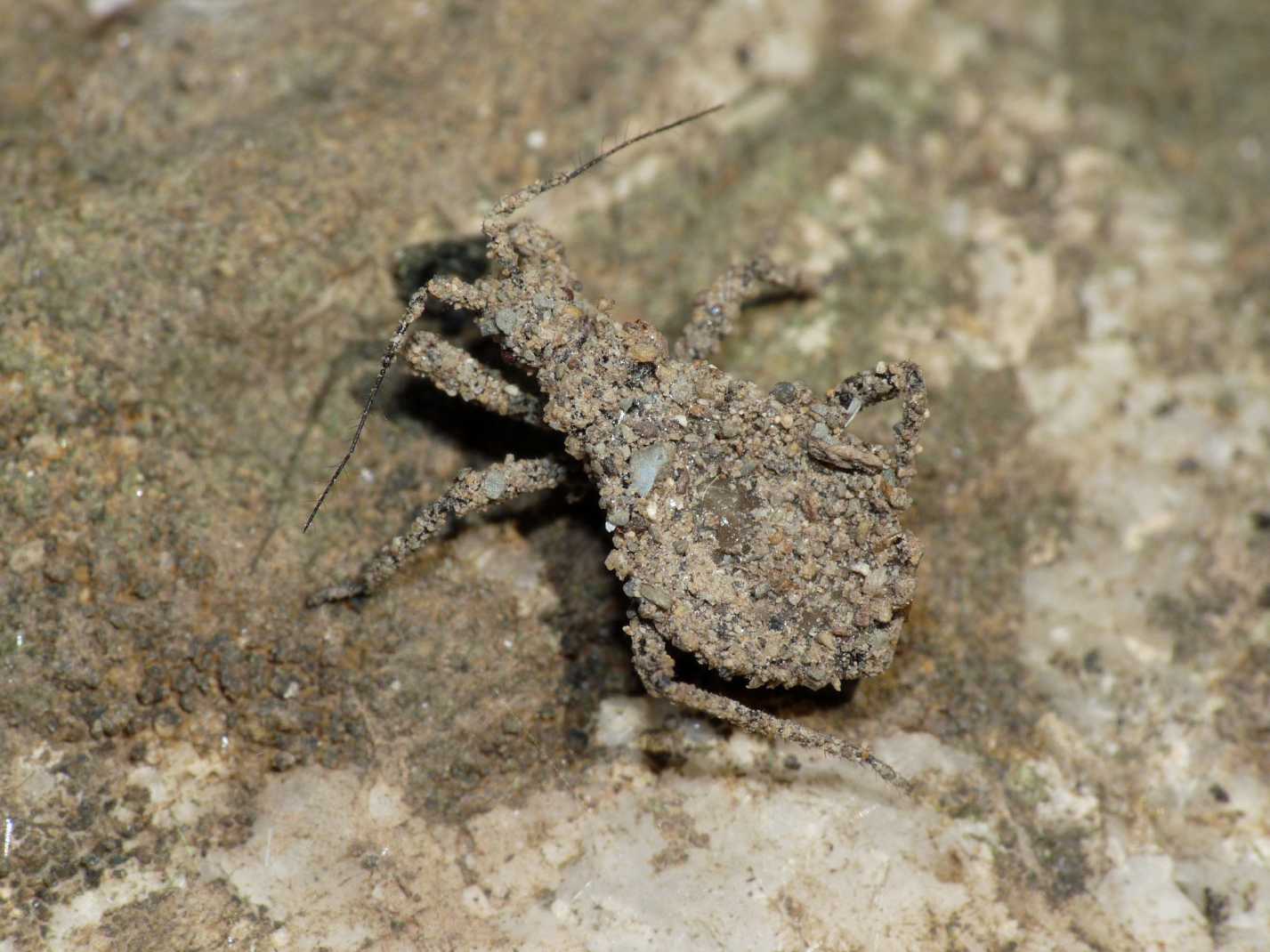
120,21 KB |
 |
|
|
Havinthus
Utente Junior
 
Città: Leiden

25 Messaggi
Tutti i Forum |
 Inserito il - 21 marzo 2011 : 13:00:38 Inserito il - 21 marzo 2011 : 13:00:38


|
Hello Gianfranco and Luigi,
Thank you for welcoming me.
Luigi, the bug in your picture is likely to be the well known Reduvius personatus, although there are other Reduvius species that have the same habit of camouflaging themselves.
The last time I found the larva (nymph) of this species it was hiding under the bark of a dead tree. It had covered itself with very small wood particles like sawdust, which might have been produced by woodboring insects (see photo).
Immagine:
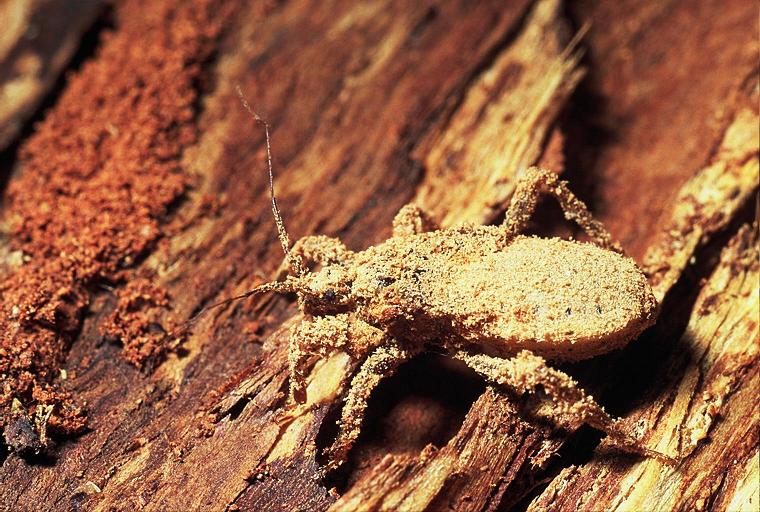
106,23 KB
Best regards,
Frank
|
Modificato da - Havinthus in data 21 marzo 2011 13:02:54 |
 |
|
|
elleelle
Moderatore Trasversale
    

Città: roma
Regione: Lazio

33325 Messaggi
Flora e Fauna |
 Inserito il - 21 marzo 2011 : 15:34:46 Inserito il - 21 marzo 2011 : 15:34:46


|
I know what you are telling.
Here is a photo similar tu yours. The nimpha of Reduvius personatus in my photo had preyed a Buprestidae Latipalpis plana just while it was getting out of its cell.
.... sorry!
My main computer, where I have my photos, is no more running; so I cannot post anything. I will insert the photo as soon as possible.
 luigi luigi
|
 |
|
|
elleelle
Moderatore Trasversale
    

Città: roma
Regione: Lazio

33325 Messaggi
Flora e Fauna |
 Inserito il - 22 marzo 2011 : 17:04:35 Inserito il - 22 marzo 2011 : 17:04:35


|
Here it is!
 luigi luigi
Immagine:
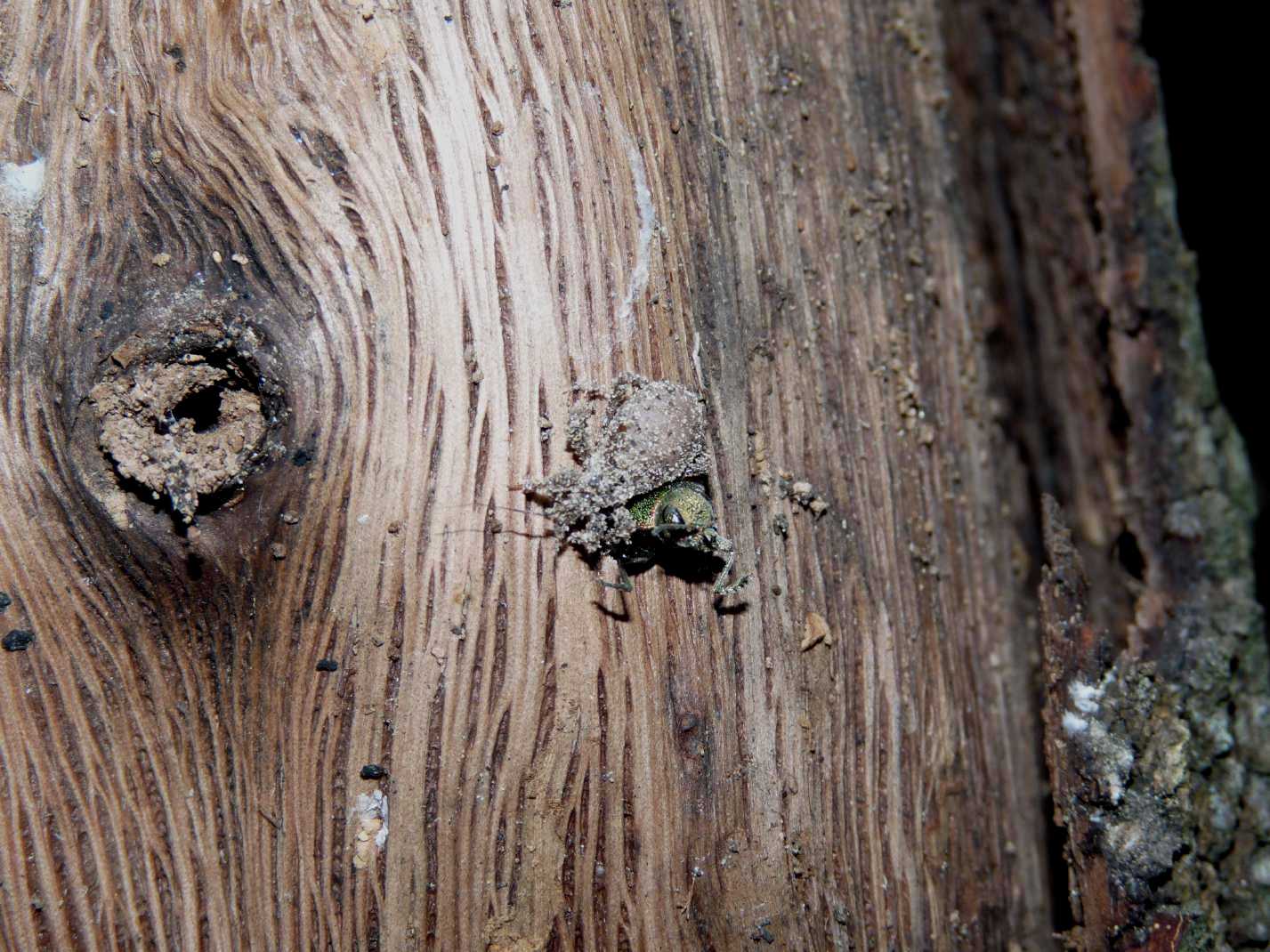
193,81 KB |
 |
|
|
Havinthus
Utente Junior
 
Città: Leiden

25 Messaggi
Tutti i Forum |
 Inserito il - 23 marzo 2011 : 19:19:28 Inserito il - 23 marzo 2011 : 19:19:28


|
Nice and interesting picture of a dramatic event!
Frank |
 |
|
|
Havinthus
Utente Junior
 
Città: Leiden

25 Messaggi
Tutti i Forum |
 Inserito il - 16 aprile 2011 : 04:30:38 Inserito il - 16 aprile 2011 : 04:30:38


|
Characteristics of the Poecilosphodrus bug in the picture:
General color black. Antennal segments 1 and 2 black, segments 3 and 4 orange. Venter bright red with black spots. Connexival segments red, posteriorly black, except segments 5, 6 and 7 completely or almost completely black. Legs black.
White waxlike substance covering extreme anterior part of thorax (around neck), anterior part of median depression of posterior pronotal lobe, entire scutellum, most of the lateral and posterior parts of thorax.
Anterior pronotal lobe with deep mediolongitudinal sulcus, concurrent with broad shallow more or less trapezoidal depression on posterior pronotal lobe. Hemelytra exceeding abdominal apex distinctly. Connexival segments 5, 6 and 7 ampliated. Anterior femora slightly curved, with apical 1/3 nodulose and densely covered with long setae, basal 2/3 without long setae, almost smooth. Anterior tibiae somewhat incrassate, slightly curved, with basal 1/2 (except base itself) densely covered with very long setae. Median and posterior femora with apical 1/3 - 1/2 nodulose.
Total body length: 16 mm (without hemelytra)
The characteristics of the genus Poecilosphodrus Reuter are:
Body elongate. Head subequal in length to pronotum. Postocular slightly longer than anteocular, gradually narrowed to base. Ocelli prominent, widely separated. Antennal segment 1 as long as head, pronotum and scutellum together, segment 2 about 0.33x as long as segment 1. Rostral segment 1 extending to eyes, segment 2 slightly longer than segment 1. Pronotum wider than long, with anterolateral angles produced. Anterior pronotal lobe with deep mediolongitudinal sulcus. Posterior lobe with a median, trapezoidal depression with feeble carina laterally. Scutellum as long as wide, with depressed disc. Hemelytra exceeding abdomen. Connexival segments ampliated, particularly those of visible abdominal segments 3 - 6. Legs slender. Femora constricted apically. (from: Malipatil, M.B., 1991. The generic classification of the Australian Harpactorinae (Hemiptera: Reduviidae). Invertebr. Taxon. 4: 935-971)
|
 |
|
|
Havinthus
Utente Junior
 
Città: Leiden

25 Messaggi
Tutti i Forum |
 Inserito il - 11 maggio 2011 : 03:57:31 Inserito il - 11 maggio 2011 : 03:57:31


|
Here's a picture of the first instar larva (nymph) of the above mentioned Poecilosphodrus undescribed spec.
Immagine:
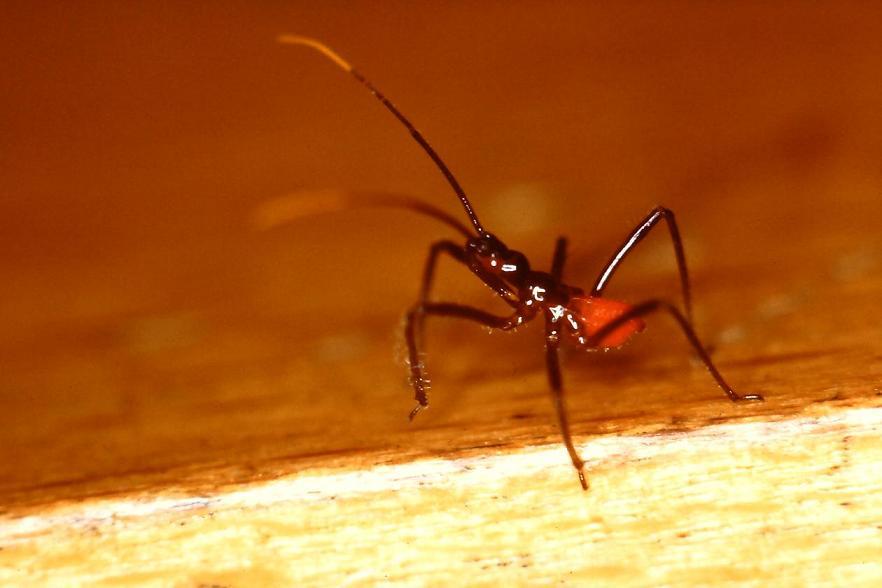
49,43 KB |
 |
|
| |
 Discussione Discussione  |
|
|
|
 Natura Mediterraneo Natura Mediterraneo |
© 2003-2024 Natura Mediterraneo |
 |
|
Leps.it | Herp.it | Lynkos.net
|

 Forum
|
Registrati
|
Msg attivi
|
Msg Recenti
|
Msg Pvt
|
Utenti
|
Galleria |
Map |
Forum
|
Registrati
|
Msg attivi
|
Msg Recenti
|
Msg Pvt
|
Utenti
|
Galleria |
Map |